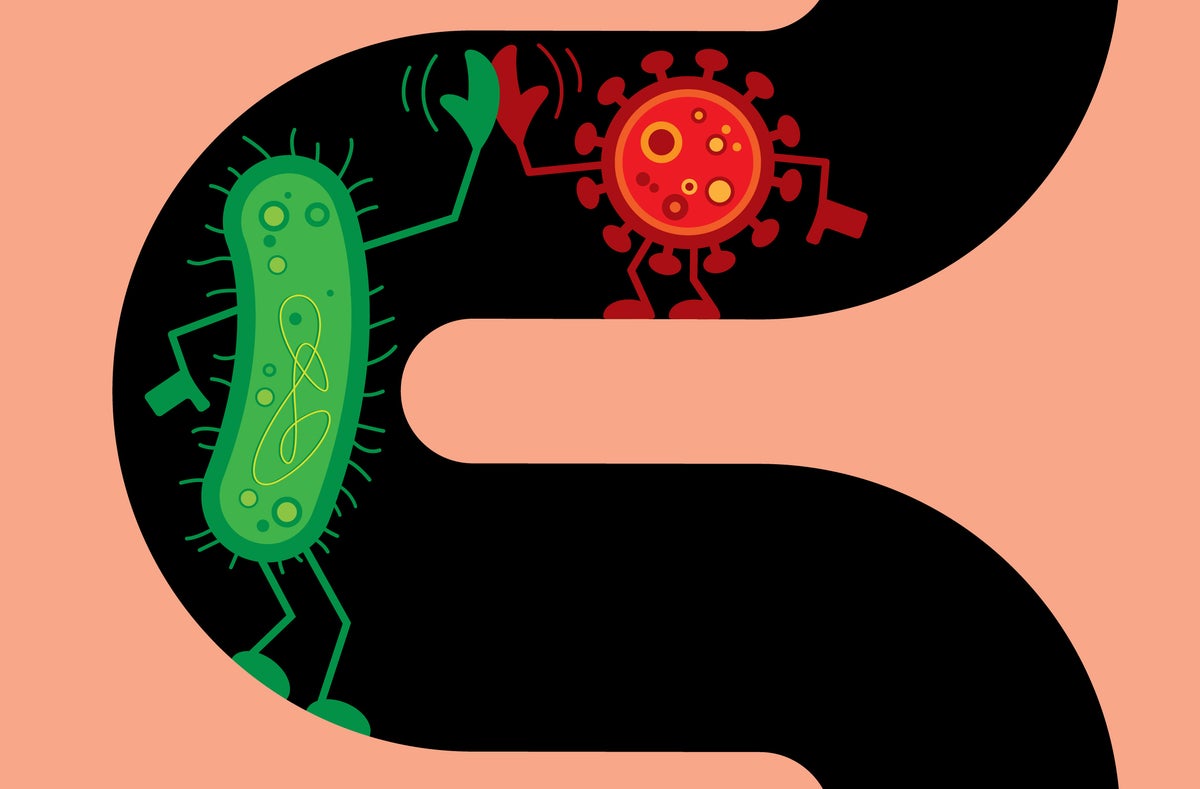Little-Known ‘Gut Virome’ Protects Us—And Changes throughout Our Lives
A new review study examines the “gut virome”: the microbiome’s mysterious viral population
Join Our Community of Science Lovers!
Viruses have an understandably bad reputation. But deep in our digestive system, a lot of them are quietly working to keep us healthy. This “gut virome” is a key part of the overall microbiome—the vast collection of microbes that play a crucial role in our digestion, immunity and overall health.
If you’re enjoying this article, consider supporting our award-winning journalism by subscribing. By purchasing a subscription you are helping to ensure the future of impactful stories about the discoveries and ideas shaping our world today.
Their review, published in Precision Clinical Medicine, particularly focuses on bacteriophages—viruses that infect bacteria and make up more than 90 percent of the virome.* These viruses sometimes benefit us by infecting and killing harmful gut bacteria. But they can also strengthen pathogens—“for example, if a bacteriophage carries a gene that offers resistance to antibiotics,” says virologist Jelle Matthijnssens, who specializes in virome research at Belgium’s Catholic University of Leuven (KU Leuven) and was not involved in the review.
The study’s authors show how an individual’s virome is constantly developing based on genetics and environment. At birth, infants’ bacteriophages often vastly outnumber their microbiome’s bacteria, but this begins to change with exposure to the outside world and as the gut develops. During adolescence, bacterial populations develop further from hormone shifts and accrued exposure to other microbes. By adulthood, healthy individuals host a delicate and mutually beneficial equilibrium of bacteriophages and bacteria.
Certain bacteriophages that help maintain this balance are extremely reactive to environmental factors such as diet and air quality, and they also respond to their host’s inflammation levels, immune signaling, stress hormones, and more. Factors such as exposure to certain drugs and poor diet can trigger an imbalance that reduces virome diversity. This in turn has been associated with disorders such as inflammatory bowel disease. In elderly people, an aging immune system and increased metabolic stress can further throw this system out of whack and increase viral numbers, potentially contributing to age-related diseases.
Understanding these aging and environmental effects may someday contribute to clinical applications such as “phage therapy,” the researchers say—but much more research is needed.
*Editor’s Note (9/9/25): This sentence was edited after posting to correct the description of bacteriophages making up more than 90 percent of the virome.
Kate Graham-Shaw is a journalist based in New York City. She covers international news for Japanese media and also covers health and science topics as a freelancer.
If you enjoyed this article, I’d like to ask for your support. Scientific American has served as an advocate for science and industry for 180 years, and right now may be the most critical moment in that two-century history.
I’ve been a Scientific American subscriber since I was 12 years old, and it helped shape the way I look at the world. SciAm always educates and delights me, and inspires a sense of awe for our vast, beautiful universe. I hope it does that for you, too.
If you , you help ensure that our coverage is centered on meaningful research and discovery; that we have the resources to report on the decisions that threaten labs across the U.S.; and that we support both budding and working scientists at a time when the value of science itself too often goes unrecognized.
In return, you get essential news, captivating podcasts, brilliant infographics, , must-watch videos, challenging games, and the science world’s best writing and reporting. You can even gift someone a subscription.
There has never been a more important time for us to stand up and show why science matters. I hope you’ll support us in that mission.
Thank you,
David M. Ewalt, Editor in Chief, Scientific American
Source: www.scientificamerican.com
